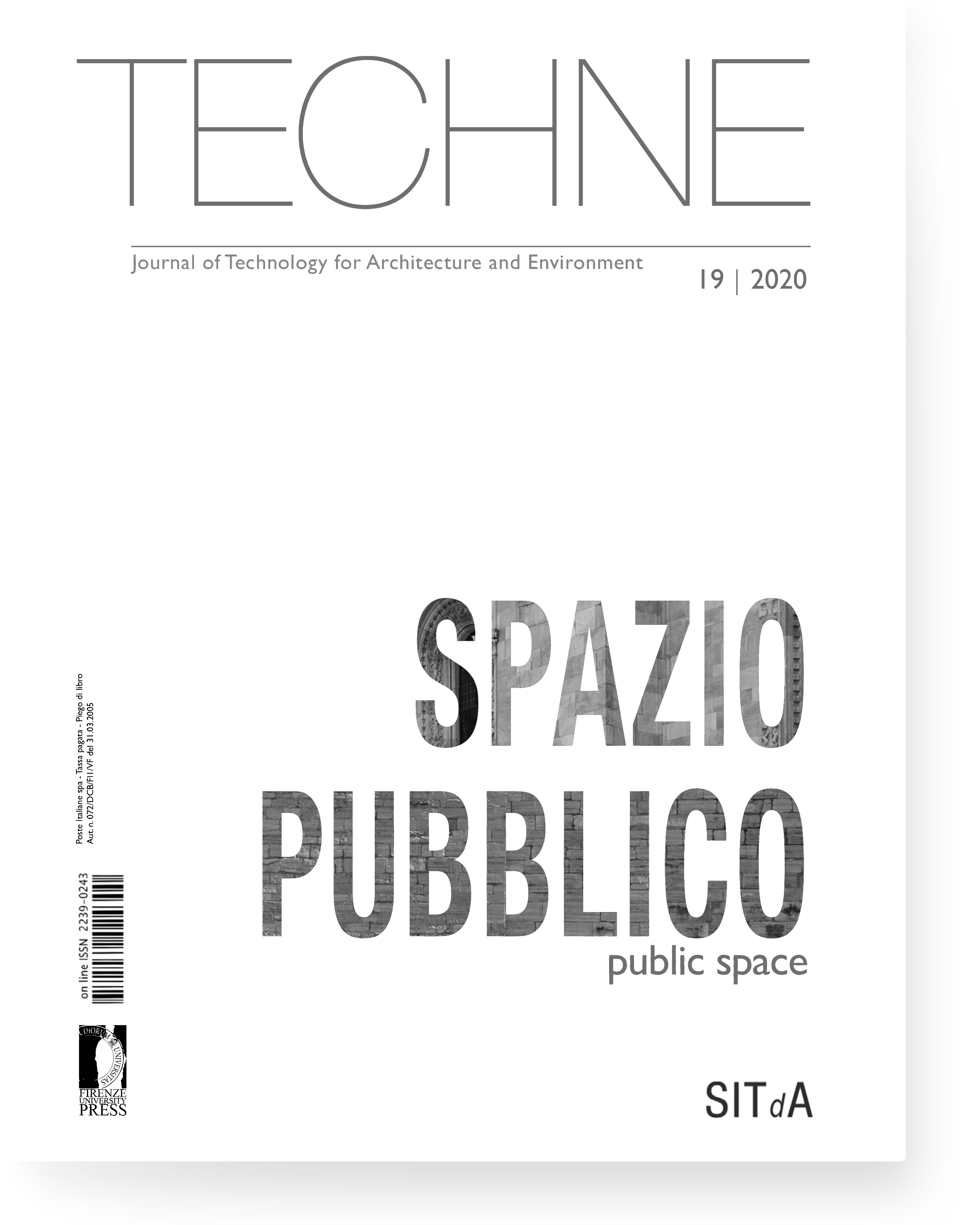Filippo Angelucci, Smartness e healthiness per la transizione verso la resilienza: Antonello Monsù Scolaro
Published 2020-01-21
How to Cite
Abstract
In the preface to the 2016 digital edition of the book Les mots et le choses, first appeared in 1966, M. Foucault1 recalls that his work was inspired by a Borges text, in which he ‘disordered’ the categories of thought and the correspondences which we are normally used to. Foucault, from the Borges text, glimpses «the suspicion of a disorder worse than the incongruence and the juxtaposition of what does not match; it would be the disorder that spreads the fragments of a large number of possible orders in a dimension without law and geometry, the heteroclite». «In the heteroclite, things are ‘laid down’, ‘set down’, ‘laid out’ in such different places that it is impossible to find a space that embraces them all, defining under each other a commonplace». In this sense, smart city, healthy city or resilient city could be considered heteroclite expressions, because of – through approaches different from the usual – they force us to trace elsewhere the solution to the problems now embedded in the cities.
Nowadays, cities have become a jumble of “grey areas” that have favored “top down choices”, all too often facilitating speculative interests which – in return – have progressively denied (sometimes to zero) the human dimension of the space project, both reducing the space of the social relation and excluding the environmental dimension from the urban texture. Hence, cities “drawn on paper” turn into unhealthy and increasingly fragile ones; exclusive and non-inclusive, especially towards the weaker social classes (elders, children, women, disabled people, etc.); increasingly less inviting for the density of the built environment, the loss of nature, the lack of common meeting spaces.
The progressive loss of urban quality and, in particular, of livability leads to a fine parallelism with the descending parable of hospital quality: as a times’ mirror, the hospitals have interpreted and translated the scientific and technological evolution, to date, as a more efficient large equipment – the “machines à guérir” of foucaultian memory – capable of healing its “guests”, but losing the original and founding human dimension of care.
Florence Nightingale, considered the pioneer of modern nursing care, in 1859 emphasized «the positive effect of beauty on illness», suggesting that the beauty of hospitals should increasingly make them familiar places for the patient, contributing to his (quick) healing.
Currently, the design of hospitals, important public health units, cannot ignore the criteria to make them gain back the quality they’ve lost over the years, through the design of green spaces, places of communication, rest and reception; also paying attention to the quality of indoor spaces, growing wellness and indoor comfort. The hospital of the future (more and more, especially in these times) requires a careful design approach, like the one of the “city of the future”, both based on a human centred perspective.
Therefore, the design of the “future cities” must consider the abovementioned issues by developing new ideas and scenarios, working in thematic areas through technologies, tools and materials, to make our cities better and more interconnected, inclusive, circular and healthy, but low-impact and less energy-consuming. Hence, in the introduction to his curatorship, Filippo Angelucci reminds us that the term smartness should assume «a multi–dimensional intelligence, which contributes to the convergence of interdisciplinary adaptive aspects regarding technology, users and artifacts, city and territory». The curator, appropriately, dwells on further important issues related to the design of “healthy” spaces for the inhabitant, which represents the dimension in relation to which the city must measure its inclusiveness, accessibility and liveability: in summary, its healthiness. Starting from the studies of Holling, Folker and Walker related to the size of socio-ecological systems in the resilient city of the future, with an intensive speculative effort, Angelucci sets out the design pathways, joined-up and synergistic, related to the concepts of smartness and healthiness; right off attempting to reconnect theoretical apparatuses with operational practice, to define the possible paradigms to preside over the innovative approaches, required to “cure” our cities.
The book edited by Angelucci is divided into three sections: “Resilience, adaptation and innovations”; “Connections and re-connections between the territory and the city” and “Strategies, scenarios and applications”. It is a careful and painstaking selection among several contributions, coming both from the session “Smart Territories and Healthy Cities” of International Conference INPUT-2016- e-agorà ε-agorα for the transition toward resilient communities: the 9th International Conference of Innovation in Urban and Regional Planning, held in Turin on 14th and 15th September 2016, and from the research carried out by some members of the cluster “Accessibility of the Environment” of the SITdA.
The collection attests the quest of connections and “hidden” self-healing relationships with the city, through theoretical treatises on cultural, decision-making and behavioural processes; both through the innovation of approaches and methods to support the design and by referring to experimental applications to re-enact the relations between cities, inhabitants and buildings.
As a whole, the volume takes up the complex challenge to define the new design paradigms of the existing city, tracing an operational pathway based on an eco-systemic and human centered perspective within design processes.
In conclusion, getting smartness and healthiness – as a new qualitative categories for the city of the future – obliges designers and technicians «who will be engaged to accept, culturally and ethically, a new sense of design, to formulate open and flexible modification hypotheses», to recompose the system of interrupted relations between territory, landscapes and inhabitants, optimizing natural and artificial resources, that today the city offers as a possibility – hopefully not the last one – to reinstate to things the sense of words.







